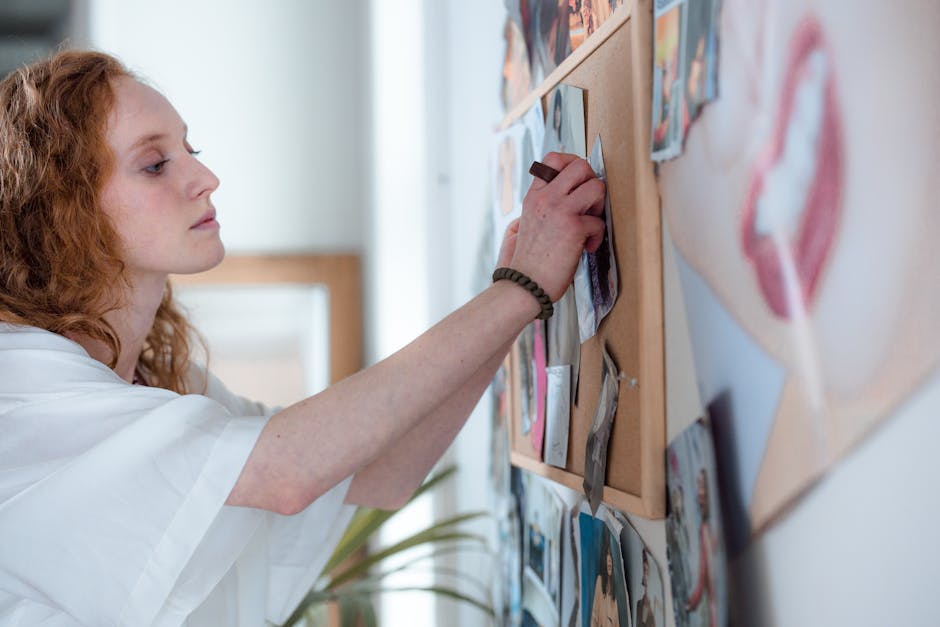Mood Boards and Planning: How to Start Any Indoor Decoration Project Like a Pro
Introduction
Embarking on an indoor decoration project can feel daunting, but with the right planning, you can transform your space like a seasoned professional. One of the most powerful tools in an interior designer’s arsenal is the mood board. Think of it as your visual roadmap, guiding you through the entire process and ensuring a cohesive and stylish final result. This article will delve into the power of mood boards and how to leverage them for a successful indoor decoration project.
Mood Boards: Your Visual Blueprint
What is a Mood Board?
A mood board is a collage of images, textures, colors, and materials that visually represent the desired aesthetic for your space. It’s a tangible way to consolidate your ideas and preferences, making the design process clearer and more efficient.
Why Use a Mood Board?
- Clarifies Your Vision: Translates abstract ideas into concrete visuals.
- Ensures Cohesion: Helps maintain a consistent theme throughout the project.
- Facilitates Communication: Allows you to effectively communicate your vision to contractors, designers, or even family members.
- Reduces Errors: Prevents costly mistakes by visualizing the final result before committing to purchases.
- Inspires Creativity: Encourages experimentation and helps you discover new possibilities.
Creating Your Perfect Mood Board
Step 1: Define Your Style & Goals
Before you start gathering images, take some time to define your desired style. Consider these questions:
- What is the primary function of the space?
- What feeling do you want the space to evoke? (e.g., calming, energizing, sophisticated)
- What are your favorite colors, textures, and patterns?
- What existing furniture or decor do you want to incorporate?
- Are there any design styles you particularly admire (e.g., minimalist, bohemian, mid-century modern)?
Step 2: Gather Inspiration
Now it’s time to collect visual inspiration! Here are some great resources:
- Magazines: Tear out pages with colors, patterns, or furniture you love.
- Online Platforms: Explore Pinterest, Houzz, and Instagram for endless inspiration.
- Fabric Swatches & Paint Chips: Collect physical samples of materials you’re considering.
- Nature: Draw inspiration from the colors and textures of the natural world.
- Photography: Use your own photos of spaces you admire.
Step 3: Curate and Organize Your Collection
Once you’ve gathered a wealth of inspiration, it’s time to curate your collection. Be selective and focus on images that truly resonate with your vision. Consider these factors:
- Color Palette: Ensure a cohesive color scheme is emerging.
- Texture and Material: Combine a variety of textures for visual interest.
- Furniture Styles: Choose furniture pieces that complement each other.
- Overall Mood: Ensure the mood board reflects the desired feeling for the space.
Step 4: Assemble Your Mood Board (Digital or Physical)
Choose a method for assembling your mood board:
- Physical Mood Board: Use a corkboard, foam board, or even a large piece of cardboard to create a tangible collage.
- Digital Mood Board: Utilize online tools like Canva, Milanote, or Adobe Photoshop to create a digital mood board.
Arrange your images and samples in a way that is visually appealing and effectively communicates your vision. Don’t be afraid to experiment with different layouts until you find one that feels right.
Planning Your Decoration Project
From Mood Board to Action Plan
Your mood board is now a powerful tool for creating a detailed action plan. Use it to:
- Create a Budget: Estimate the cost of materials, furniture, and labor.
- Develop a Timeline: Set realistic deadlines for each stage of the project.
- Source Materials: Identify suppliers and gather quotes.
- Prioritize Tasks: Determine which tasks need to be completed first.
- Visualize the Final Result: Refer to your mood board throughout the process to stay on track.
Tips for a Successful Project
- Don’t Be Afraid to Experiment: Try new things and push your creative boundaries.
- Prioritize Quality Over Quantity: Invest in fewer, high-quality pieces that will last.
- Pay Attention to Detail: Small details can make a big difference.
- Get a Second Opinion: Ask a friend or professional for feedback.
- Enjoy the Process! Decoration should be a fun and rewarding experience.
Conclusion
Creating a mood board is an essential step in planning any successful indoor decoration project. It allows you to clarify your vision, ensure cohesion, and communicate your ideas effectively. By following the steps outlined in this article, you can transform your space like a pro and create a home that truly reflects your personal style. So, gather your inspiration, unleash your creativity, and get ready to embark on a rewarding journey of transformation!














Post Comment